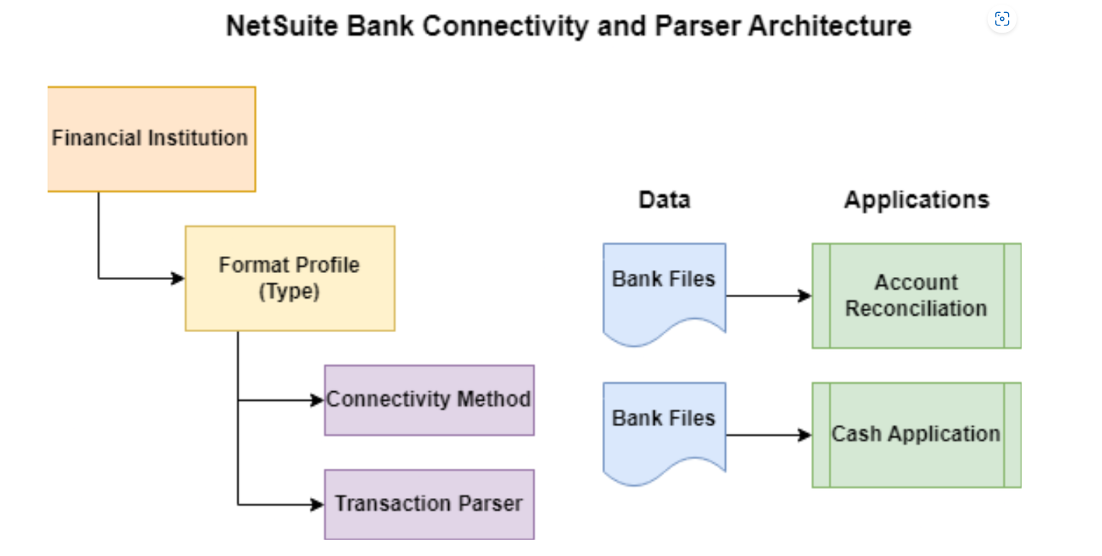Issue
Client would like to import the account statements from a particular bank and to display it under the “Match Bank Data” page in NetSuite for the account reconciliation purpose. They will provide the Statement API details to import the data from the bank.
Solution
To automatically import bank statement data into NetSuite for reconciliation purposes, we can use the custom plugin named Financial Institution Connectivity plugin along with the Financial Institution Parser plugin.

Automating Imports for Bank Reconciliation
If you have the Administrator role, you can use a Financial Institution Connectivity Plug-in to automate bank data imports for bank or credit card reconciliation.
When data is imported for bank or credit card reconciliation, NetSuite uses reconciliation rules to automatically match your imported bank lines to account transactions in NetSuite.
All imported bank lines that cannot be matched by the system are available for manual matching on the Match Bank Data page. You can reconcile matched transactions on the Reconcile Account Statement page.
To automate imports for bank reconciliation:
- Develop and upload a custom Financial Institution Connectivity Plug-in. For details, see Financial Institution Connectivity Plug-in.
- Develop and upload a custom Financial Institution Parser Plug-in. For details, see Financial Institution Parser Plug-in.
- Create a financial institution record. See Creating Financial Institution Records.
- Add a format profile to the financial institution record. See steps 1 – 3 in Creating Format Profiles for Bank Reconciliation.
- Configure the format profile to automate imports of bank or credit card data for matching and reconciliation:
- In the Profile Name field, enter a name for your format profile. For example, Wells Fargo – BAI2.
- In the Description field, enter a description to help you identify this format profile.
- From the Profile Type field dropdown, select Bank Reconciliation.
- From the Connectivity Method dropdown list, select the appropriate Financial Institution Connectivity Plug-in implementation.
- From the Transaction Parser list, select the appropriate custom or standard Financial Institution Parser Plug-in implementation.
- Use the subtabs to configure a connection to a financial institution, link accounts, map custom bank codes (optional), and configure your transaction parser (optional). See the following help topics:
- Configuring a Connection to a Financial Institution (Without a SuiteApp)
- Linking Accounts for Financial Institution Connectivity
- Mapping Custom Bank Codes
- Transaction Parser Configuration